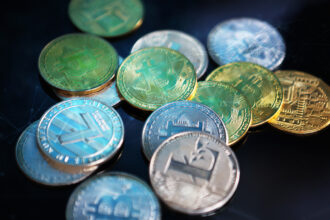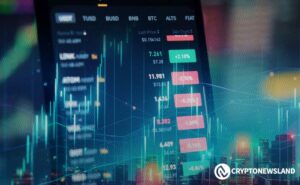On August 28, Dr. Xiao Feng, Chairman and CEO of HashKey Group, delivered a keynote speech titled “ETF is Good! DAT is Better!” at Bitcoin Asia 2025. The following is organized from the live transcript, with some minor edits that do not affect the original meaning.
In recent months, many friends have asked me a question: from on-chain bitcoin trading to off-chain stock exchanges, bitcoin has become a very popular investment tool in stock trading. So, is it more appropriate for such an investment tool to take the form of an ETF, or a DAT (Digital Asset Treasury)?
My personal conclusion is that the DAT model, much like the revolution brought by ETFs when they first emerged, represents a new revolution in financial instruments.
We know that stocks started with individual stocks trading on stock exchanges, then index funds appeared, and after that, index fund ETFs. Each innovation in financial instruments has brought about a significant new asset class. Crypto has moved from on-chain to off-chain, entering the stock market in a way that 99% of people can easily accept, allowing all stock market investors to easily and habitually access crypto assets. So, which way is better? Is the ETF approach better, or is DAT better?
My personal view is: DAT may be the best way for crypto assets to move from on-chain to off-chain. So far, the only single-commodity, single-asset investment tool in global capital markets with the largest ETF is gold. There is no single-stock ETF for stocks, because stocks are already traded on stock exchanges and can be easily purchased. If you want to buy a basket of stocks, such as an index fund, you need other investment tools—index funds or ETFs are the most convenient tools for traditional investors. So, before single-asset ETFs, there was only gold; after the launch of the BTC ETF, we now have a second single-asset ETF. This is a natural and logical process, as people are used to using ETFs to create investment tools, making it easier for traditional stock market investors to invest in alternative assets like crypto.
However, when valuing ETFs, we use Net Asset Value (NAV); for DAT, we use Market Value. These are two completely different concepts. Market value brings greater price volatility, while NAV fluctuates much less. Therefore, as a single investment tool for crypto, I believe DAT is the better approach.
Better Liquidity
The greatest advantage of DAT is that it offers better liquidity than ETFs, which is the most important and core concern for any investor.
From my observation, the smoothest and best way to exchange between crypto and traditional financial assets is through exchanges. The growth of ETF scale comes from subscriptions and redemptions, which require the participation of three or more intermediaries and take 1-2 days to complete settlement. Clearly, this is not as efficient as completing conversions on a distributed ledger through trading, which may only take 2 or 10 minutes. Therefore, trading may become the main way to convert between traditional finance and crypto assets in the future, so better liquidity is the core advantage DAT has over ETFs.
Better Price Elasticity
At the same time, market value offers more appropriate price elasticity than NAV. We know that one of the main reasons MicroStrategy can continuously build its financing structure through various financing tools and hold a large amount of bitcoin is because BTC itself is highly volatile. Also, the reason why hedge funds and other alternative investors are willing to invest is precisely because they can own a more volatile asset through shares, split equity and bonds off-market, and turn volatility into another tool to both protect their own prices and arbitrage. Especially convertible bonds (CB), which are often structured into products by hedge funds or alternative investment institutions off-market. Therefore, these institutions like to invest in companies like MicroStrategy, buying its stock or convertible bonds, because they can conduct structured operations on them. Better price elasticity is something ETFs do not possess.
More Appropriate Leverage
Third, it offers more appropriate leverage. Previously, single-asset investment only had two extremes—either holding BTC or ETH spot, or buying futures or CME contracts. There was a huge gap in between, which allowed listed companies to design suitable leveraged financing structures. You only need to hold the stock, and the company manages the leveraged structure itself, allowing you to enjoy a higher premium than the price growth of the crypto asset itself.
Built-in Downside Protection
Tools like DAT can bring premiums and have built-in downside protection. Imagine, if the stock price drops below the net asset value, it is equivalent to offering investors a discounted opportunity to buy BTC or ETH. This market price situation will quickly be arbitraged away, so it is inherently a good downside protection. Otherwise, you would rather buy the stock, which is equivalent to buying BTC or ETH at a discount.
Considering all these factors, DAT may be a more suitable financing tool for crypto assets. Just as ETFs were very suitable for index or basket stock investment strategies in the stock market, DAT may be the new trend we will see in the next 3 to 5 years.
The scale of assets held by DAT may approach the scale currently covered by stock market ETFs, perhaps in another ten years. Therefore, I believe DAT is the most promising new investment tool for the future; it is more suitable for crypto assets, while ETF may be more suitable for stock assets.
Of course, this is just my personal opinion. Thank you all.

![[Bitpush Daily News Selection] Li Lin, Shen Bo, Xiao Feng, and Cai Wensheng plan to jointly establish a $1 billion Ethereum treasury company; Federal Reserve's Musalem: May support another rate cut, policy not predetermined; Charles Schwab: Clients' interest in its crypto products is rising, with crypto site visits up 90% year-on-year](https://img.bgstatic.com/multiLang/image/social/8adb0f5428cbad636affb1d78db93e2b1760758383908.png)


